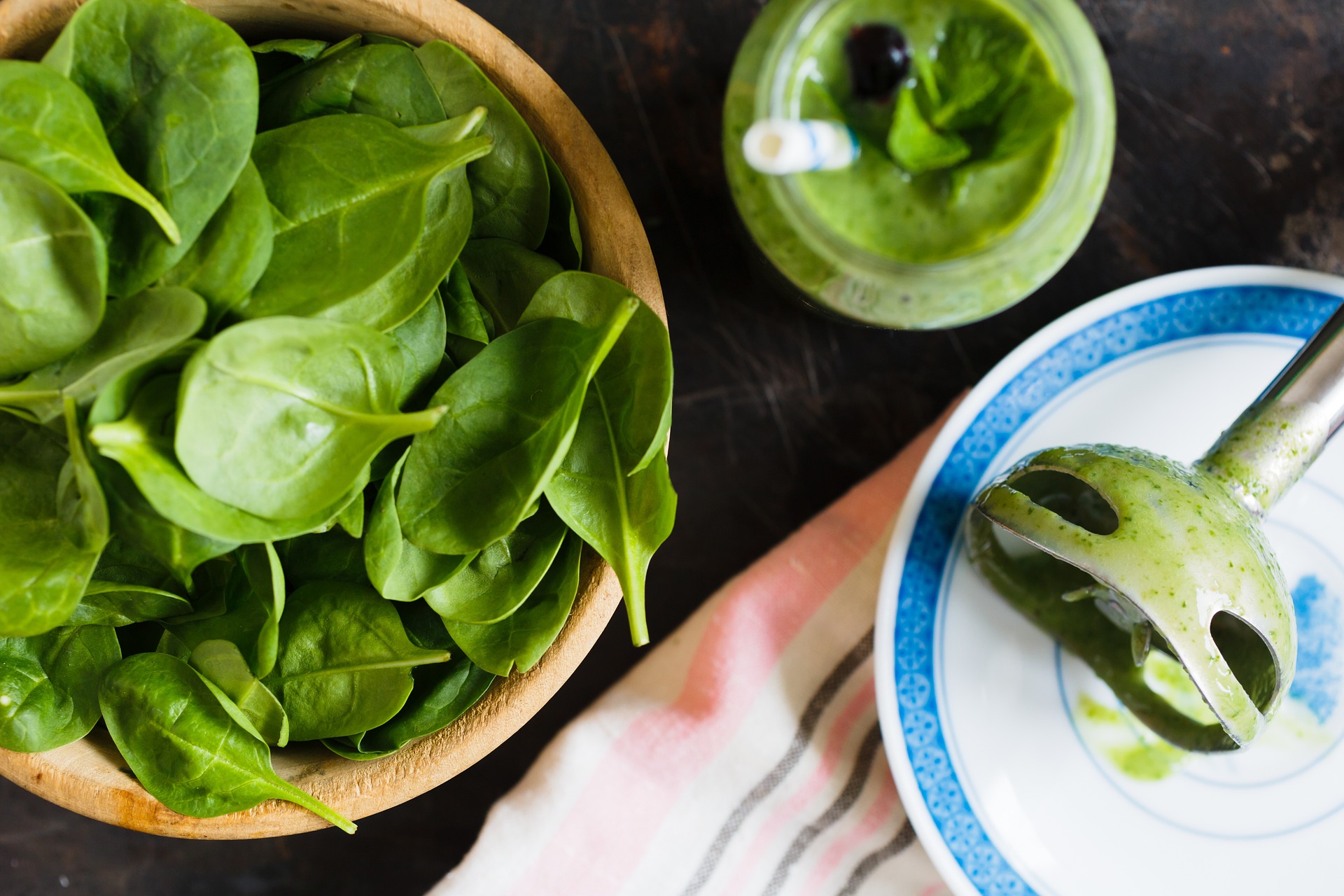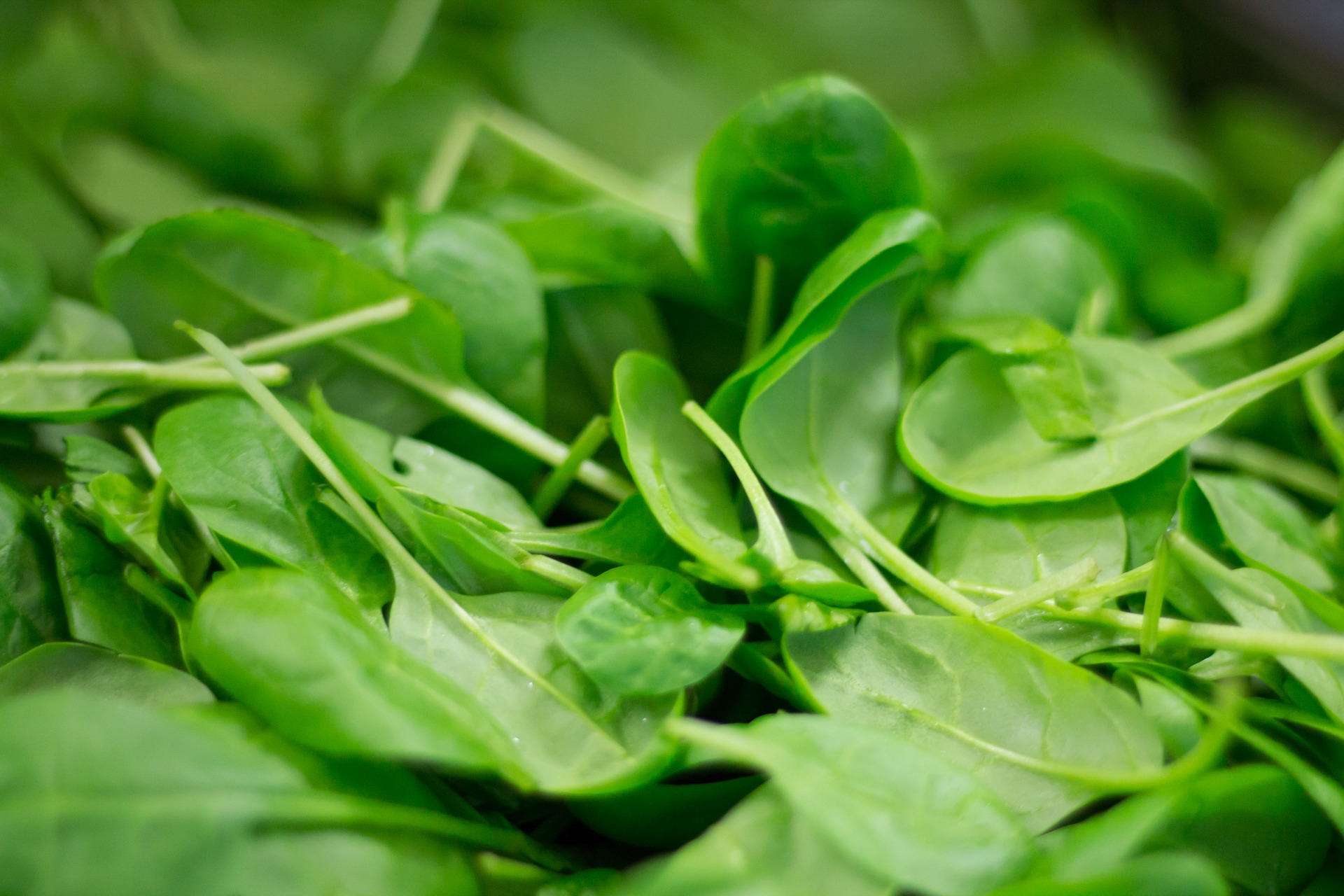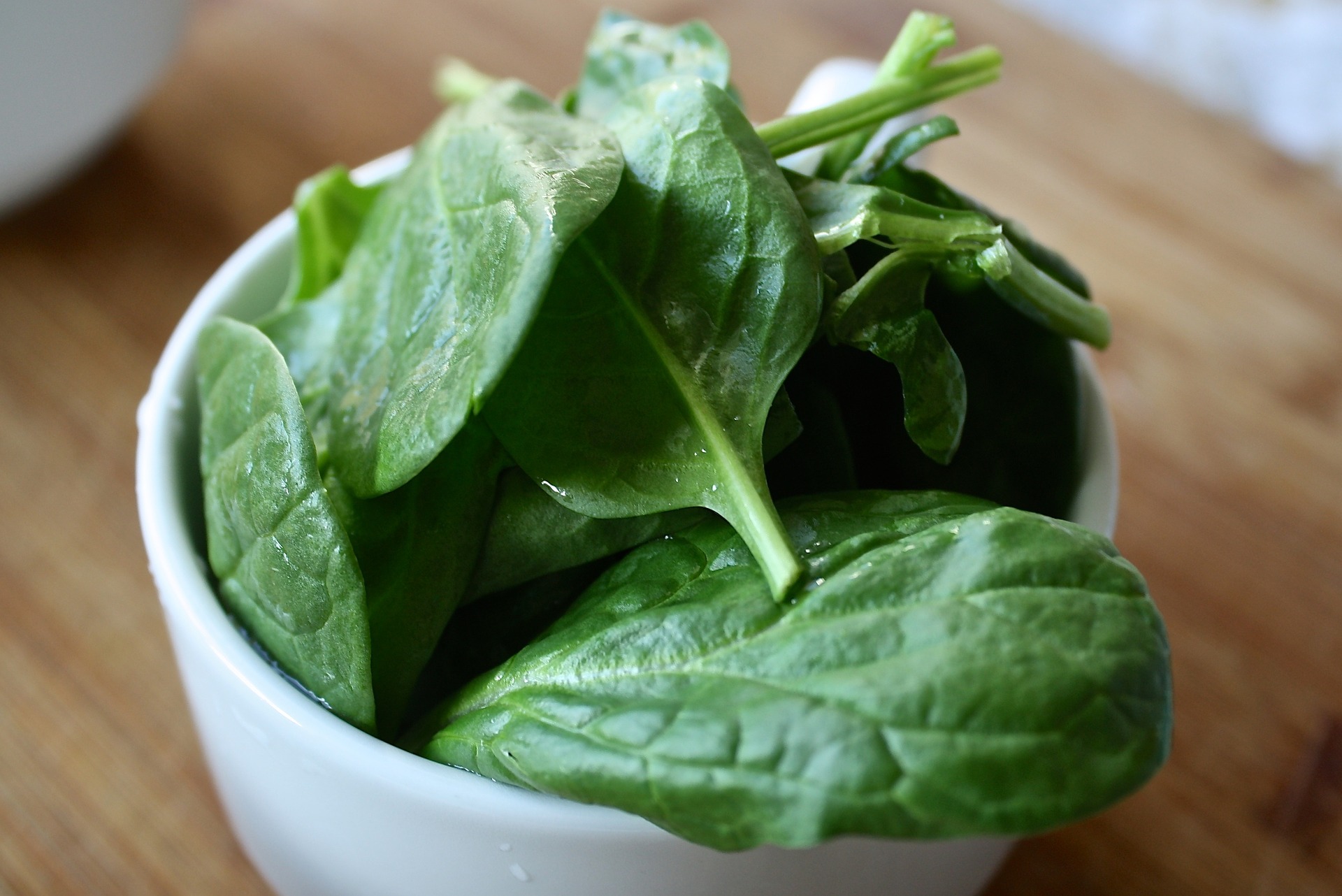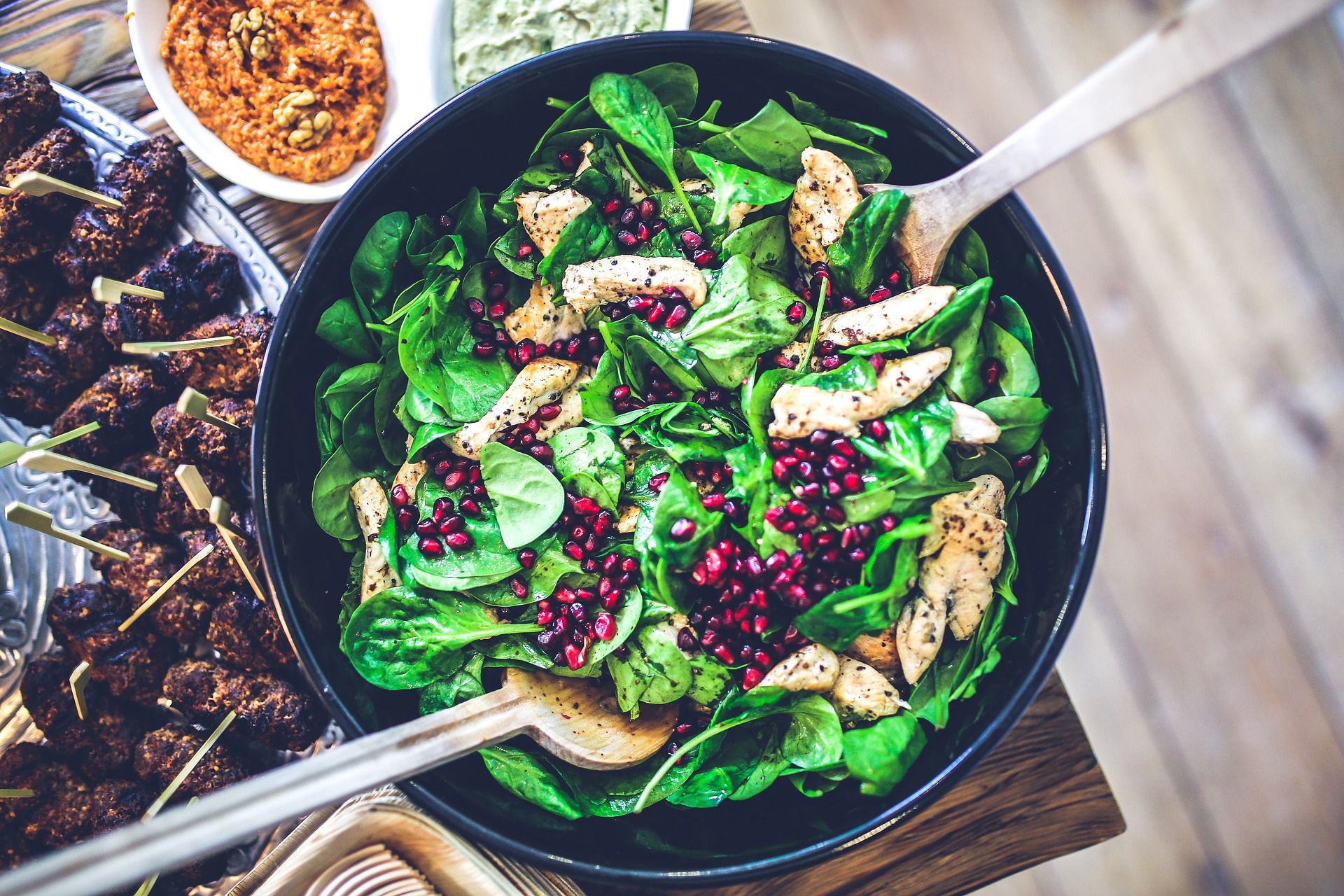by Sharon Quercioli

I am never without spinach in my refrigerator or freezer. Luckily for my parents, I’ve always loved spinach. They did a great job weaving it into our dinners. Lucky for me, spinach is great for our overall health. Dark leafy greens in general are a great source of antioxidants and other heart and cardiovascular health.
Improves Blood Glucose

Spinach has a form of an antioxidant called alpha-lipoic acid. This helps lower our glucose level. In addition, it also prevents stress-induced glucose level changes and increases insulin sensitivity. It also aids in decreasing autonomic neuropathy and peripheral neuropathy in diabetics.
Diabetes runs in our family, and we’re always looking for ingredients and vegetables in our diet to stabilize our glucose levels. My family is of the mindset that if you add spinach to your plate (whether it is a part of a salad, simple and sautéed, or cooked into the main dish) it is taking the place of something that may not be as healthy for you. Spinach is a natural and tasty addition to any meal, and, since it is a good source of fiber, it can also help you feel full.
Reduces High Blood Pressure
Spinach is high in potassium, which can help your blood pressure. If you have a tendency of including a lot of sodium to your diet, it can reduce the negative effects of it, including sodium’s propensity of raising your blood pressure. If you’re looking for other forms of high-potassium vegetables and fruits, try potatoes, tomatoes, oranges, lima beans, bananas and avocados.
Aesthetic Side Effects: Great Skin and Hair!

Spinach is rich in vitamin A, which is good for sebum production. Sebum is what keeps your hair moisturized. Spinach is great for helping your skin as well since it is full of vitamins A and C (which is great for maintaining and building collagen).
Did you know that anemia is a common cause of hair loss? Anemia is a condition where your body is not making enough hemoglobin or red blood cells, which can make you look pallor as well as feel tired and have low energy. You can prevent anemia by eating foods that are high in iron, like spinach.
Storing Spinach
I keep spinach in two different places, in the freezer and in the refrigerator. There is always a bag of frozen spinach in our freezer for homemade soups, sautéed vegetables, and stews.
If you have fresh spinach leaves from your garden or if you bought organic spinach from the store, your best bet is to store it in your refrigerator. First, make sure that you wash and dry all the leaves. Also make sure that you eat them within a week of harvesting them or purchasing them.
They are best stored in the bag that you used when you bought them. Remember that once the bag becomes wet, it speeds up the deterioration. So take a look at it every time you open the refrigerator door. Keeping the leaves wrapped in dry paper towels can help if you want to keep them in a resealable bag. Store them in the crisper drawer or just on the shelf.
The leaves should be perky and should hold their shape when you pick it up. They should also be a bright green in color and have a soft texture. If you notice wilting, it is safe (and recommended) to use them in meatloaf, stews, or soups. However, if you notice that they appear slimy, it’s time to toss them in the compost bin.

My Favorite Spinach Recipes
Spinach is great cooked or raw. I love adding spinach into my salads because it varies the flavor and texture of an otherwise boring bowl of greens. You can add spinach to:
- Pastas (sautéed and added to the sauce or on top of the dish)
- Soups (mixed in at the end when fresh, added in a little earlier if frozen)
- Casseroles (baked in with your favorite ingredients)
- A sandwich or wrap (much healthier than iceberg lettuce)
- As a dip (spinach and artichoke dip with pita chips are a staple at our house)
- An omelet or scramble (a great way to incorporate spinach into every meal)

My favorite spinach salad is the hearty Quinoa-Pomegranate-Spinach Salad
What you’ll need:
- Half cup of water
- Fourth cup of quinoa
- Six cups of spinach
- Half cup of sliced almonds
- Half cup of crumbled Feta cheese
- Fourth cup of sliced red onion
- Half cup of pomegranate seeds
- Splash of your favorite dressing
What you’re going to do with all of that:
- Bring the water to a boil and cook the quinoa by stirring it in, simmering (covered) for 10 minutes. Removing from heat, and then fluffing it with a fork)
- Place the spinach on a plate or in a serving bowl.
- Top with quinoa and the rest of the ingredients
- Serve with your favorite dressing. Just a drizzle should do since this salad is full of flavor. I love a good poppy-seed dressing with this salad.
